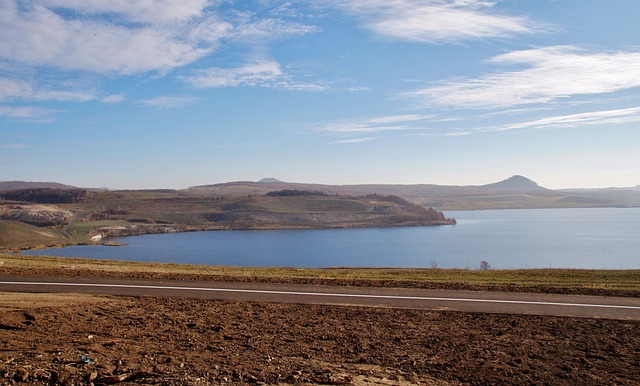The mid-19th century gold rush in Lane County, Oregon, sparked economic and social transformation. Gold rush economics attracted a diverse population, revitalizing the region with new towns and intensifying cultural exchange. While wealth disparities created tensions, community life flourished through festivals, churches, and schools, fostering camaraderie amidst rapid growth and change. Women and children played crucial roles in sustaining the local economy beyond physical labor.
In the heart of Oregon’s scenic landscape, Lane County experienced a transformative era during the mid-19th century gold rush. This period saw a dramatic shift in demographics and local economy, with farming giving way to frenzied mining endeavors. The social dynamics were as complex as the terrain, marked by stark contrasts between wealthy prospectors and struggling miners. This article explores the multifaceted impact of the gold rush on Lane County’s communities, from shifting economic landscapes to the evolving roles of women and children.
- Gold Fever: Lane County's Population Boom
- Economic Shift: From Farming to Mining
- Social Structure: Rich vs. Poor in Mining Towns
- Women and Children: Roles in the Gold Rush Era
- Community Life: Festivals, Churches, and Schools
Gold Fever: Lane County's Population Boom
The discovery of gold in Lane County, Oregon, during the mid-19th century ignited a fever that reshaped the region’s social dynamics and demographics. Word of the precious metal’s abundance attracted a diverse influx of settlers from across the country and even abroad, leading to a population boom. This sudden surge created a vibrant yet chaotic mix of seasoned miners, aspiring prospectors, entrepreneurs, and families seeking a better life. The gold rush economics transformed Lane County into a bustling hub of activity as new residents flocked to the rivers and hillsides in search of their fortunes.
The social landscape underwent a dramatic metamorphosis as communities expanded and new towns sprang up. Saloons, general stores, and boarding houses became the lifeblood of these settlements, catering to the needs of the burgeoning population. The diverse group of newcomers brought with them various cultural practices and traditions, enriching the county’s tapestry but also sparking occasional tensions due to resource scarcity and competing interests. Despite the challenges, the spirit of camaraderie and mutual support often prevailed, as folks united in their quest for gold and a better tomorrow.
Economic Shift: From Farming to Mining
During the gold rush era, Lane County, Oregon experienced a dramatic shift in its economic landscape. The initial reliance on farming and agriculture gave way to a new focus on mining as prospectors flocked to the region in search of fortunes. This transformation was not merely a change in industry; it reshaped social dynamics and the very fabric of community life. Farmers who once tended their fields found themselves competing for resources and labor with miners, leading to shifts in population distribution and labor market dynamics.
The economic boom attracted a diverse array of individuals—from seasoned gold seekers to newly arrived immigrants—who brought with them various skills and aspirations. This influx challenged the established social order and fostered a period of rapid adaptation. As mining camps sprang up across Lane County, they became melting pots of cultures, where old ways of life mixed with new ambitions, driving the region’s economy towards a more diverse and dynamic future.
Social Structure: Rich vs. Poor in Mining Towns
The Lane County Oregon gold rush era brought about a dramatic shift in social dynamics, reflected starkly in the contrasting lifestyles between the rich and the poor within mining towns. The economic boom attracted a diverse range of individuals, from wealthy entrepreneurs seeking to capitalize on the frenzy to hardworking common folk hoping to strike it lucky.
Wealth accumulation played a significant role in shaping social hierarchies during this period. The owners of mines and businesses profited immensely from the gold rush, amassing considerable wealth. Conversely, miners and laborers often faced challenging conditions, with their wages determined by market fluctuations and the whims of mine owners. This disparity led to tensions between the haves and have-nots, as the rich enjoyed luxurious amenities while the poor struggled to make ends meet.
Women and Children: Roles in the Gold Rush Era
During the gold rush era, women and children played unique and often underappreciated roles in shaping the social dynamics of Lane County, Oregon. While men dominated the physical labor of mining, women took on crucial responsibilities back in the settlements. They managed households, operated stores, provided medical care, and educated the young. These contributions were vital to sustaining the gold rush economy, as they ensured that the mining camps had the necessary supplies and services.
Children, too, were integral parts of these communities. Many grew up quickly, learning various skills from their parents and peers. Some even took on small tasks in the mines or helped with agriculture. The gold rush environment fostered a blend of hard work and camaraderie among all ages, shaping lasting memories and experiences for those who called Lane County home during this pivotal time.
Community Life: Festivals, Churches, and Schools
During the Lane County Oregon gold rush era, community life was vibrant and centered around a robust economy driven by mining activities. Festivals became frequent gatherings where miners, families, and new settlers came together to celebrate their shared experiences. These events not only provided entertainment but also served as vital social connectors, fostering a sense of camaraderie among the diverse population drawn to the county by the promise of gold.
Churches played a significant role in shaping the social dynamics, offering a space for spiritual nourishment and community building. With the rapid influx of people, schools sprang up across Lane County, becoming essential institutions for education and social interaction. These places provided not only academic learning but also served as safe havens where children and adults alike could engage in recreational activities, further enriching the social fabric of the region during this tumultuous yet exciting period.
